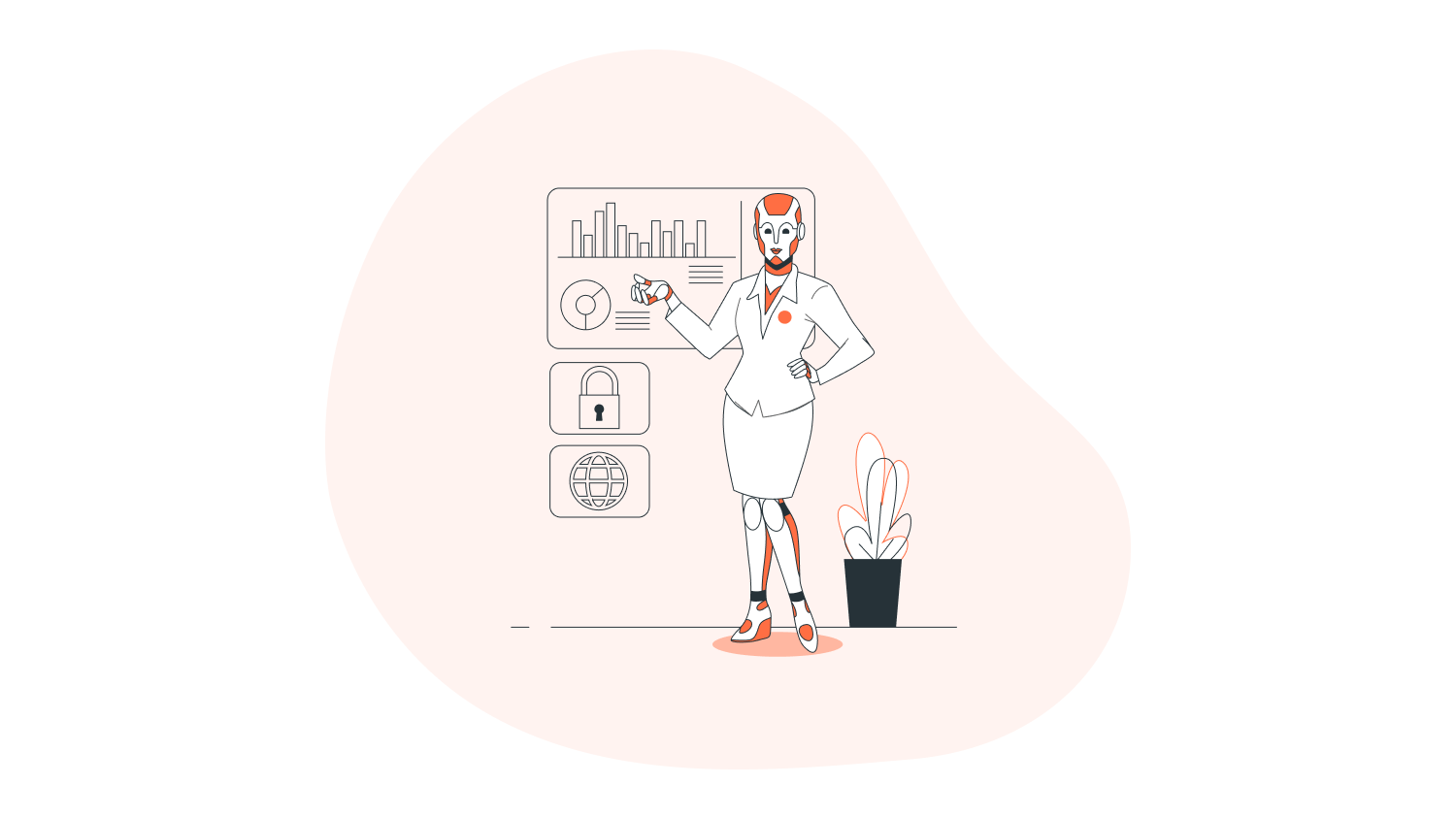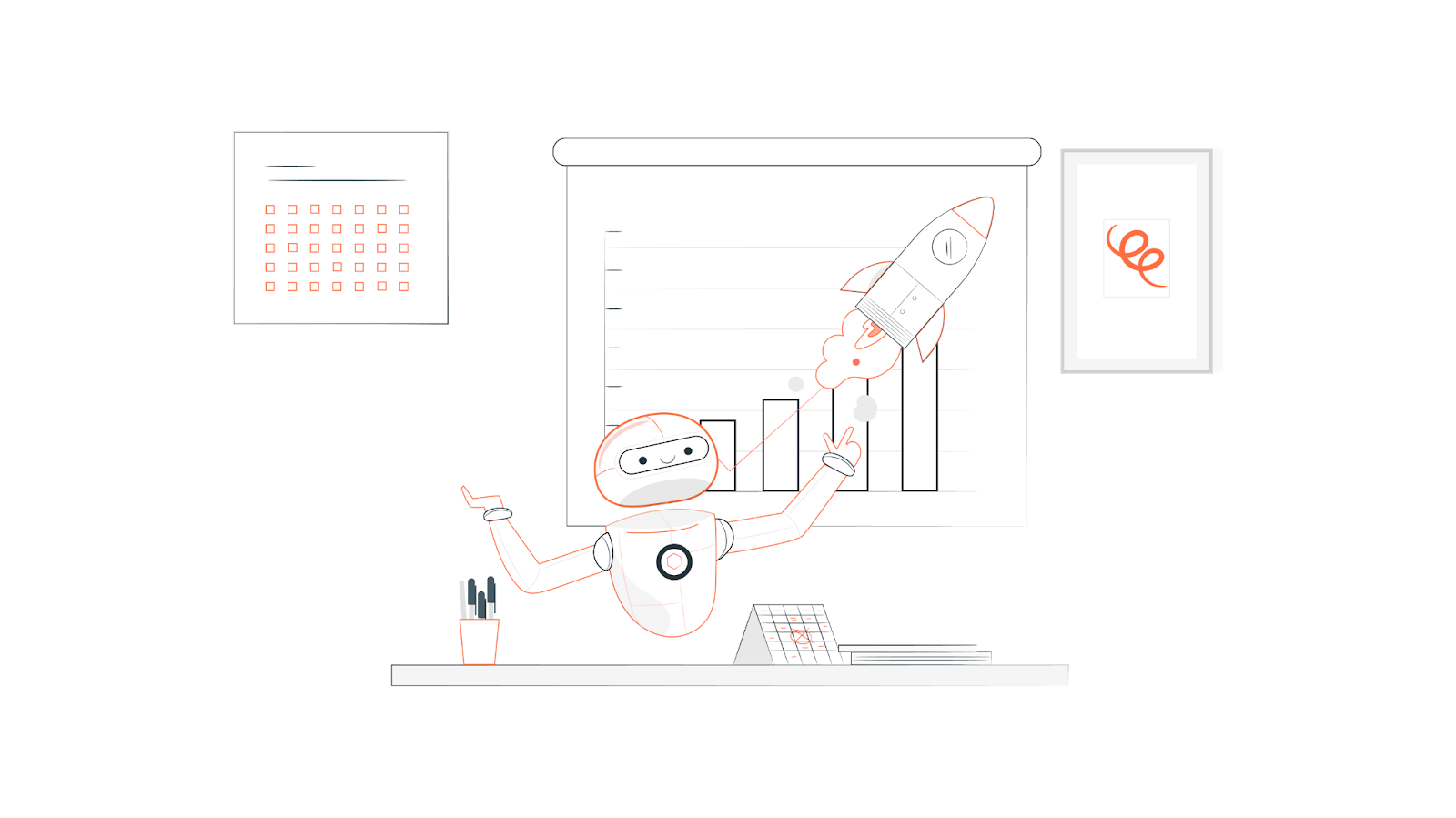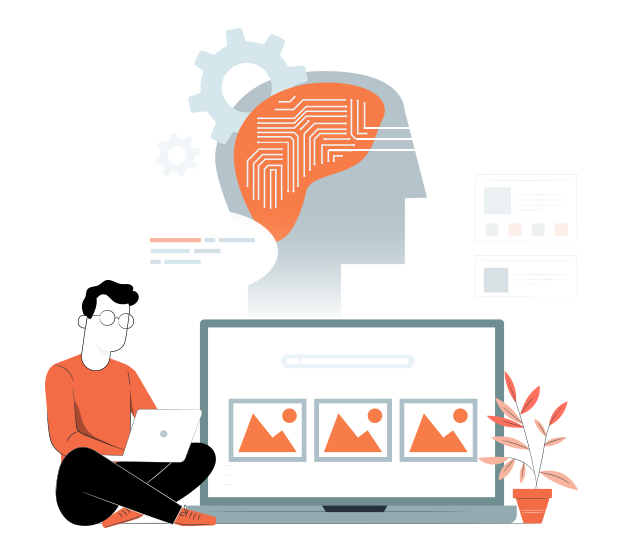User experience is a strange topic when it comes to rapid product development. But everyone agrees that the best way to improve any business is to better the experience of its customers.
To that extent, having an understanding of User Experience has helped software businesses immensely due to technologies that allow them to measure user satisfaction while they interact with the product/service.
The role of AI in UX design is thus, an unavoidable necessity for application developers. As it’s challenging to keep changing design patterns or responses with each customer, it is always best to rely upon deep learning methods to understand data and suggest the best possible way to keep the user engaged with the business.
Since its inception, AI has been supporting engineers to understand how users interact with things, be that a software offering or a piece of physical equipment.
We have seen a lot of potential in companies tripling their profit figures by implementing AI in their core processes. Check out our complete range of AI services for more information.
Why UX needs changing

However we may define it, user needs and attention span differ from user to user. It’s difficult to design a product/service on the first iteration that caters to every user. While conventional product design takes time on research and user feedback, employing AI to learn from data points and provide the best solution to the user ensures more customer retention over time with minimal effort in UX research.
Also, customer preferences change over time. It’s pointless to expect that what once worked for customers is what they keep expecting. The whole point of UX is to better the service for the customer so that it becomes a delightful experience for them to return.
Employing machine learning models here could help create personalized suggestions or even completely separate UI catered to specific needs.
How quickly should you implement UX changes?
The pace of implementation of UX is another example where AI can help immensely. When considering customer demographics, younger users generally want to see more intuitive steps taken to care for them while using a product/service.
Mobile applications are prone to quick design changes catered to make more conversions with a seemingly quicker UI, both in action and appearance.
But when considering the late adopters of technology, it is important to ensure that they easily understand the process of finding their product and getting some benefit out of it. These customers may find it unpleasant to see a different UI or change of button position with each iteration.
AI can help you understand what users really expect from your product/service quickly and help make improvements based on a much bigger dataset.
Learn why you need artificial intelligence for your business.
How AI in UX design can improve UX over time
1. Learning human emotions over time
The biggest advantage of employing UX methods in your product design is to incorporate empathy into the product. Most business interactions take this for granted, but it only shows up as a challenge when the process is automated. Machines need to be taught about the best move forward and there are millions of possibilities here.
- Using emotion AI is perhaps the best way that businesses can improve the overall user experience for customers. Using a well-designed machine learning framework, human interaction can improve with ongoing and existing data over time.
- This method can also be used to simulate user testing and find the best option out of different designs. One advantage of using AI here is the zero bias it has on presented data. Unlike us, machine learning uses data, not suggestions or bias to calculate better options.
- Emotion AI requires facial recognition, machine learning algorithms, and data analysis to work hand in hand to develop outputs to improve the UX. This also means that user interest can now be quantified into usable data – numbers – which can then be utilized to help users better.
2. Personalized recommendations using AI
Just as advertising took over much of the internet, so did the methods to cut them from the field of view. This means that it’s difficult more than ever for businesses to convey brand messages to their intended audience. With much less time to impress users and avoid competition from similar businesses, it’s better to employ AI to understand niche customers and market only to them.
- Data from social media platforms are invaluable to data scientists and engineers who can create customer personas from user actions on these platforms. This can then be used to filter down users who would benefit the most from your product/service.
- eCommerce websites that offer a variety of products could benefit immensely from AI. As customers search for a particular product, machine learning models can be trained to show similar products, accessories, or even better offers.
- Autocorrect and autocomplete are both developments borne out of a UX need to improve communication speed between users. The model is trained to use a snippet of the input data and suggest word/phrase recommendations to help users complete their sentences.
3. Superfast conversations with Chatbots
AI in chat optimization is not new to the industry, and chatbots have come a long way from their earlier stages of answering a short list of questions. With approximations as close to real-life communications, chatbots are now commonplace in most customer-facing businesses.
- The primary advantage Chatbots offer is their availability day and night. This can’t be stressed enough as it helps businesses operate across the globe and still serve customers without delay.
- UX varies from person to person. This use case can be best served by a chatbot that can learn from both text and speech input. Employed with a continuously learning ML model, conversations using chatbots can level up with real-life interactions.
- Chatbots are versatile as they learn from ongoing and previous data to guide customers to make better decisions, or even solve customer problems quicker.
4. Automation done right
Lessening the time for users to get maximum benefit has always been the primary concern for businesses. Automation has truly helped them achieve their targets to this end, but it’s better to know when to use automation to your benefit rather than as an added feature to the product/service.
- Automation is best suited for repetitive tasks and those which can be delegated to machines. This also means that not all customer-facing tasks can be automated. Chatbots are a great example here, as peculiar customer questions may still require a human touch from time to time.
- One place where automation works best is while designing UI for websites. Based on customer data, products/services that pique user interest can be presented straight to users to generate more customer retention and even build a loyal brand following.
- Automation has helped businesses to streamline tasks even, creating simplified work/sales funnels to improve the odds of task completion. What’s more, customized ERP solutions frequently employ automation to deliver industry-specific solutions.
Conclusion
AI is here to stay for the long run. With enough data and ML models, data scientists are finding better ways to solve user challenges on a daily basis. While this may not totally take over the role of human thought and imagination, every aspect that requires repetition can still be delegated to AI to create wonderful results.
At NeoITO, we test out UX challenges through ML models that are trained to find out faults in UX and crucial bugs that could halt sales altogether. If you are unsure of how to choose an AI development company to upgrade your sales figures.
Here’s an example of how we used the power of AI to solve our client’s queue management problems.
Talk to us today for more information on how we solve all things AI!
FAQs
1. How is AI used in the design?
Understanding user interaction through heatmaps, bounce rates, and other machine learning models can significantly advance UX design with AI.
2. Is there a future in UX design?
UX design never goes out of style as it is important to fashion the most intuitive ways for customer interaction. In this respect, UX is going to be even more critical for most businesses that have retention as their top priority.




